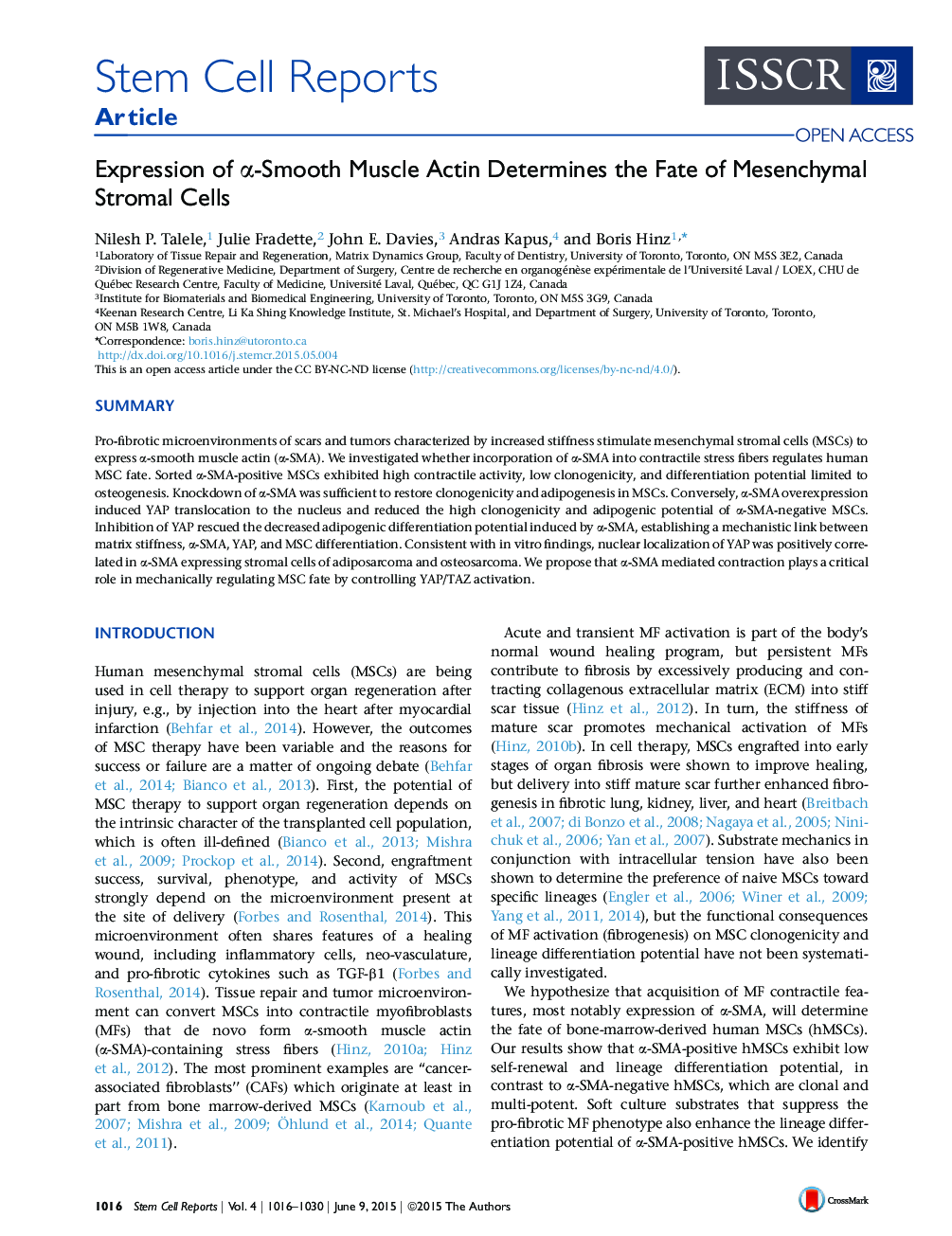| Article ID | Journal | Published Year | Pages | File Type |
|---|---|---|---|---|
| 2093543 | Stem Cell Reports | 2015 | 15 Pages |
•The α-SMA-positive myofibroblast fraction of human MSCs exhibits low clonogenicity•Formation of α-SMA stress fibers enhances nuclear translocation of YAP/TAZ in MSCs•α-SMA knockdown favors adipogenesis, while overexpression promotes osteogenesis•α-SMA-mediated lineage choice of MSCs is YAP dependent
SummaryPro-fibrotic microenvironments of scars and tumors characterized by increased stiffness stimulate mesenchymal stromal cells (MSCs) to express α-smooth muscle actin (α-SMA). We investigated whether incorporation of α-SMA into contractile stress fibers regulates human MSC fate. Sorted α-SMA-positive MSCs exhibited high contractile activity, low clonogenicity, and differentiation potential limited to osteogenesis. Knockdown of α-SMA was sufficient to restore clonogenicity and adipogenesis in MSCs. Conversely, α-SMA overexpression induced YAP translocation to the nucleus and reduced the high clonogenicity and adipogenic potential of α-SMA-negative MSCs. Inhibition of YAP rescued the decreased adipogenic differentiation potential induced by α-SMA, establishing a mechanistic link between matrix stiffness, α-SMA, YAP, and MSC differentiation. Consistent with in vitro findings, nuclear localization of YAP was positively correlated in α-SMA expressing stromal cells of adiposarcoma and osteosarcoma. We propose that α-SMA mediated contraction plays a critical role in mechanically regulating MSC fate by controlling YAP/TAZ activation.
Graphical AbstractFigure optionsDownload full-size imageDownload as PowerPoint slide
